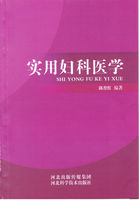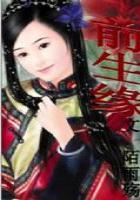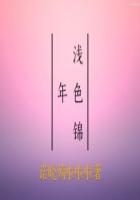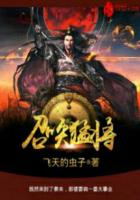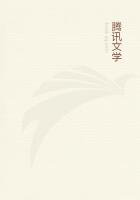This basket can be supplied by the conjuring depots, or it can easily be made. The handle can be made of wire and wrapped with raffia grass which is on sale at the department stores. A pasteboard lining covered with red satin must first be sewed into the basket, and then two flaps of pasteboard should be hinged to a pasteboard bottom by pasting on a hinge of cloth. A suitable spring can be made of spring wire and sewed into position, after which this is all covered with red satin and placed in the basket.
The basket should have sides about four inches high, and the bottom should measure about seven and one-half by ten inches. The sides and ends slope outward, and the basket is open wicker work.
Suitable bows of ribbon on the ends of the handle and corners of the basket conceal the mechanism.
In the present instance, the assistant behind the scenes, after reading and placing the questions in duplicate envelopes which the manager had previously numbered, sealed them and placed them in the sides of the basket, bent up the flaps into position, and lowered the handle locking them in place. He now pushed this basket into view on a table at the rear of the stage; and when the manager was ready to return the envelopes, he scooped the dummy envelopes from the table (where they lay after the bag was emptied) into this basket. He then lifted the handle which released the flaps, covered up the dummy envelopes and dropped the originals into view.
These he took down and quickly distributed to the writers. Being numbered, this could be quickly done.
. . . . .
I will now describe the method employed on the third evening. This time dummy envelopes were placed in the sides of the basket, and the handle left in a lowered position while the operator gathered up the envelopes. As the manager returned to the stage he took the basket by the handle. This released the dummy envelopes, and covered up the originals retaining them. He emptied the dummy envelopes upon the small table and then laid the basket on a table near the flies in the rear, and rather out of view. An assistant behind the scenes took out the original envelopes, opened them, and as he read the questions repeated them into a small telephone. The wires from this telephone ran under the stage carpet to a pair of metal plates with a tack in the center of each plate which pointed upward. These plates were located under certain spots in the carpet and directly in front of the medium's chair. There were also two other pairs of wires leading to two other positions on the stage. The medium was dressed as a "Mahatma" on this evening, wearing a large turban. A large tassel dangled by his left ear, completely concealing a small "watch-case receiver" which was attached to this ear. Two tiny wires led from this receiver, inside his collar, down his person, and were connected inside his shoes to other wires which penetrated the soles of his shoes.
These latter wires were soldered to copper plates which were tacked into position on his shoe soles. He now took his position in the chair and placed his feet over the hidden tacks, which now contacted his shoe plates, completing the circuit, so that anything whispered into the telephone on the stage was repeated in his ear.
He then gave a few tests, tapping his spirit bell, which was a signal for more information from the assistant.
He soon grew nervous and walked away giving a test as he walked.
He now paused in a certain position for a moment, placing his hand to his head as if somewhat dazed and tapping his bell. In this position his feet were again over two concealed tacks, and he again secured information for another test, which he gave as he walked about. He now paused in a third position and gave another test, after which he returned to the chair, continuing his work. This maneuvering he kept up until all the tests were given; after which he fell upon a couch exhausted, but with his feet from the spectators.
The manager now stepped to the rear of the stage and took the basket, which was now in place containing the original (?) envelopes behind the flaps; and stepping to the small table he scooped in the dummy envelopes; then taking the basket by the handles, he stepped down the runway and rapidly returned the unopened (?) envelopes to their writers. The assistant had, of course, sealed the questions in duplicate envelopes previously numbered by the manager. He had placed these behind the flaps, and shoved the basket into view on a table at the rear of the stage.
I use a variation of these tricks in my double parlors. I have made a "billet changing basket" as above described, and have also made a similar basket except that it contains no mechanism.
I pass cards and envelopes to the spectators in the front parlor.
When the questions are written and sealed in the envelopes, I gather them up in the mechanical basket; I step to a table in the rear parlor and apparently empty them upon it. In reality, I have just raised the handle so that the originals are retained, and the dummy envelopes are emptied on the table instead.
I now step to an adjoining room for an instant, to get a small decorated screen. I secretly leave the basket containing the original envelopes in this room and return with the other basket in my hand in its place. I place the small ornamental screen on the table back of the envelopes, but leave the envelopes in view and request the spectators to notice that I do not go near them until I get ready to give the tests. I now carelessly lay the non-mechanical basket on a table in the room where the spectators are and proceed with some other tricks.
Usually I give the series of experiments described in the chapter entitled "Mediumistic Reading of Sealed Writings." I state to the spectators that I will not give the tests for the sealed envelopes until later in the evening.



